Frymaster FPGL530CA, FPGL430CA User Manual
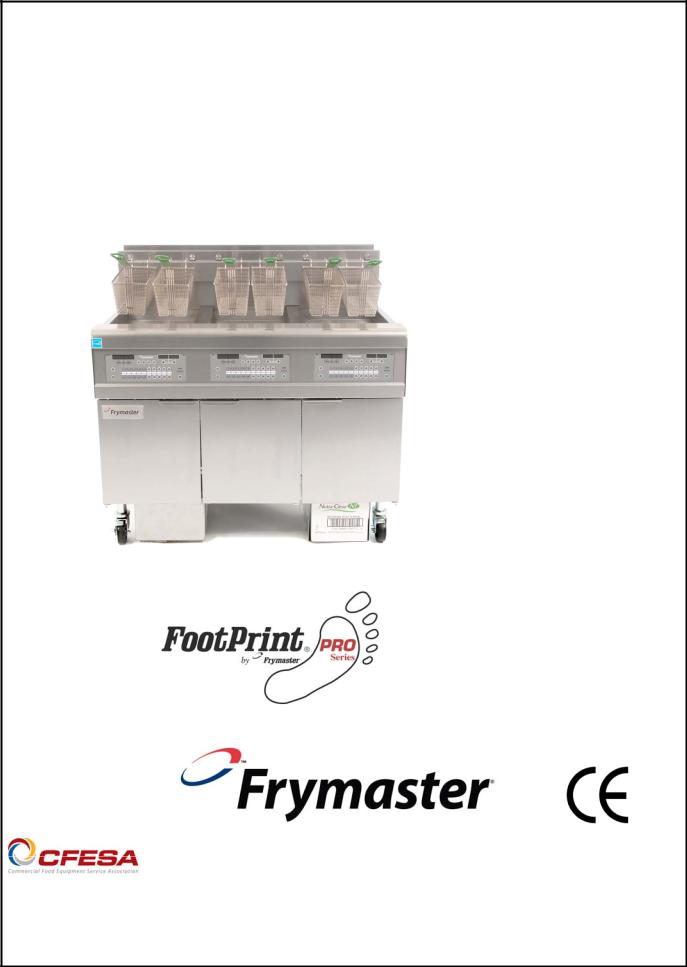
Manual Operation & Installation |
(OCF30) Fryer Conserving Oil FRYERS GAS |
|
™ |
|
|
Frymaster, a member of the Commercial Food Equipment Service Association, recommends using CFESA Certified Technicians.
24-Hour Service Hotline 1-800-551-8633 |
06/2015 |
www.frymaster.com E-mail: service@frymaster.com |
*8196687* |
|
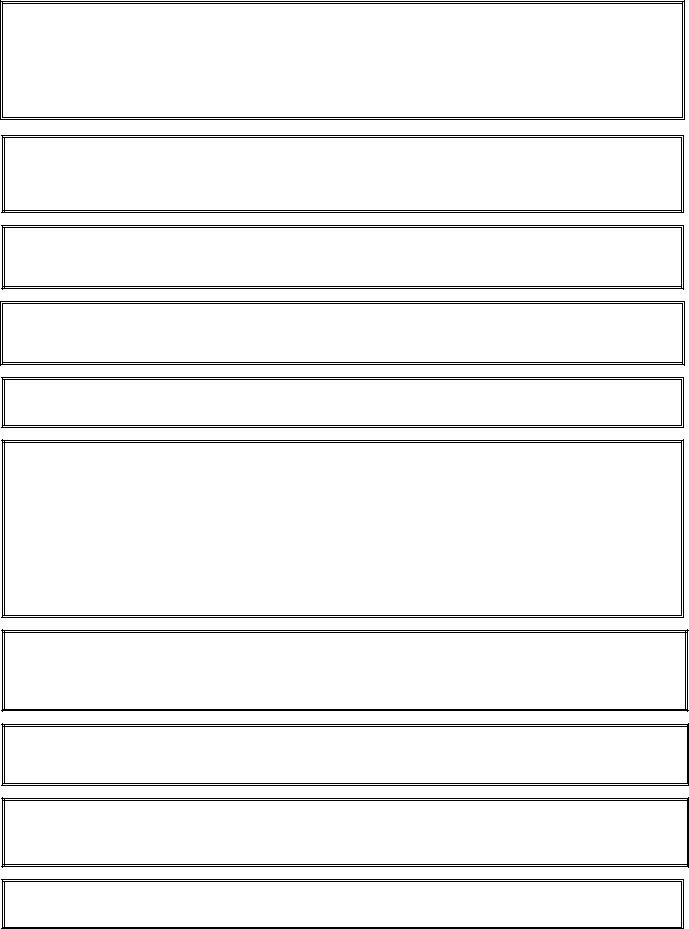
NOTICE
IF, DURING THE WARRANTY PERIOD, THE CUSTOMER USES A PART FOR THIS MANITOWOC FOOD SERVICE EQUIPMENT OTHER THAN AN UNMODIFIED NEW OR RECYCLED PART PURCHASED DIRECTLY FROM FRYMASTER DEAN, OR ANY OF ITS AUTHORIZED SERVICERS, AND/OR THE PART BEING USED IS MODIFIED FROM ITS ORIGINAL CONFIGURATION, THIS WARRANTY WILL BE VOID. FURTHER, FRYMASTER DEAN AND ITS AFFILIATES WILL NOT BE LIABLE FOR ANY CLAIMS, DAMAGES OR EXPENSES INCURRED BY THE CUSTOMER WHICH ARISE DIRECTLY OR INDIRECTLY, IN WHOLE OR IN PART, DUE TO THE INSTALLATION OF ANY MODIFIED PART AND/OR PART RECEIVED FROM AN UNAUTHORIZED SERVICER.
NOTICE
This appliance is intended for professional use only and is to be operated by qualified personnel only. A Frymaster DEAN Factory Authorized Servicer (FAS) or other qualified professional should perform installation, maintenance, and repairs. Installation, maintenance, or repairs by unqualified personnel may void the manufacturer’s warranty. See Chapter 1 of this manual for definitions of qualified personnel.
NOTICE
This equipment must be installed in accordance with the appropriate national and local codes of the country and/or region in which the appliance is installed. See NATIONAL CODE REQUIREMENTS in Chapter 2 of this manual for specifics.
NOTICE TO U.S. CUSTOMERS
This equipment is to be installed in compliance with the basic plumbing code of the Building Officials and Code Administrators International, Inc. (BOCA) and the Food Service Sanitation Manual of the U.S. Food and Drug Administration.
NOTICE
Drawings and photos used in this manual are intended to illustrate operational, cleaning and technical procedures and may not conform to onsite management operational procedures.
NOTICE TO OWNERS OF UNITS EQUIPPED WITH CONTROLLERS
U.S.
This device complies with Part 15 of the FCC rules. Operation is subject to the following two conditions: 1) This device may not cause harmful interference, and 2) This device must accept any interference received, including interference that may cause undesired operation. While this device is a verified Class A device, it has been shown to meet the Class B limits.
CANADA
This digital apparatus does not exceed the Class A or B limits for radio noise emissions as set out by the ICES-003 standard of the Canadian Department of Communications.
 DANGER
DANGER
Improper installation, adjustment, maintenance or service, and unauthorized alterations or modifications can cause property damage, injury, or death. Read the installation, operating, and service instructions thoroughly before installing or servicing this equipment. Only qualified service personnel may convert this appliance to use a gas other than that for which it was originally configured.
 DANGER
DANGER
No structural material on the fryer should be altered or removed to accommodate placement of the fryer under a hood. Questions? Call the Frymaster Dean Service Hotline at 1-800-551-8633.
 WARNING
WARNING
After installation of a gas fryer and after any maintenance to the gas system of a gas fryer-manifold, valve, burners, etc. – check for gas leaks at all connections. Apply a thick soapy solution to all connections and ensure there are no bubbles. There should be no smell of gas.
NOTICE
The Commonwealth of Massachusetts requires any and all gas products to be installed by a licensed plumber or pipe fitter.
ii
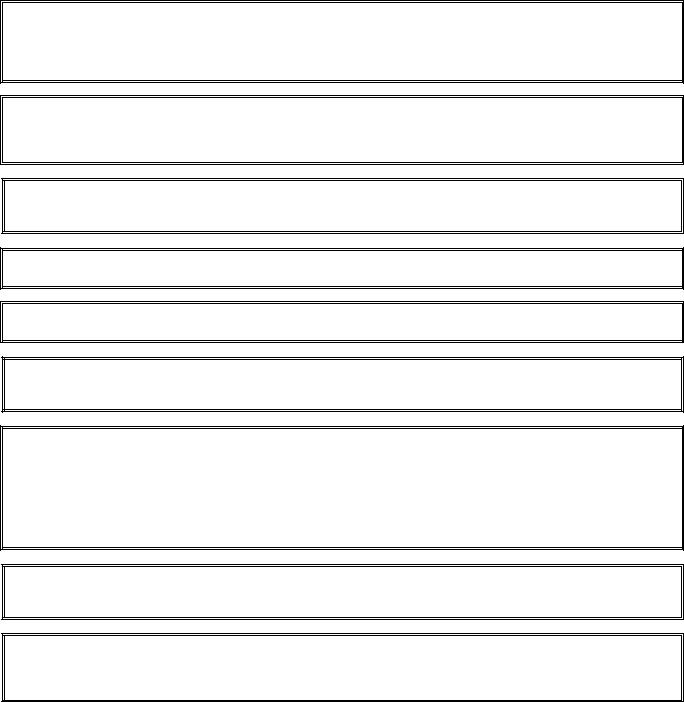
 DANGER
DANGER
Adequate means must be provided to limit the movement of this appliance without depending upon the gas line connection. Single fryers equipped with legs must be stabilized by installing anchor straps. All fryers equipped with casters must be stabilized by installing restraining chains. If a flexible gas line is used, an additional restraining cable must be connected at all times when the fryer is in use.
 CAUTION
CAUTION
No warranty is provided for any Frymaster fryer used in a mobile or marine installation or concession. Warranty protection is only offered for fryers installed in accordance with the procedures described in this manual. Mobile, marine or concession conditions of this fryer should be avoided to ensure optimum performance.
 DANGER
DANGER
The front ledge of the fryer is not a step! Do not stand on the fryer. Serious injury can result from slips or contact with the hot oil.
 DANGER
DANGER
Do not store or use gasoline or other flammable liquids or vapors in the vicinity of this or any other appliance.
 DANGER
DANGER
Do not spray aerosols in the vicinity of this appliance while it is in operation.
 DANGER
DANGER
Instructions to be followed in the event the operator smells gas or otherwise detects a gas leak must be posted in a prominent location. This information can be obtained from the local gas company or gas supplier.
 DANGER
DANGER
This product contains chemicals known to the state of California to cause cancer and/or birth defects or other reproductive harm.
Operation, installation, and servicing of this product could expose you to airborne particles of glasswool or ceramic fibers, crystalline silica, and/or carbon monoxide. Inhalation of airborne particles of glasswool or ceramic fibers is known to the State of California to cause cancer. Inhalation of carbon monoxide is known to the State of California to cause birth defects or other reproductive harm.
 DANGER
DANGER
The crumb tray in fryers equipped with a filter system must be emptied into a fireproof container at the end of frying operations each day. Some food particles can spontaneously combust if left soaking in certain shortening material.
 WARNING
WARNING
Do not bang fry baskets or other utensils on the fryer’s joiner strip. The strip is present to seal the joint between the fry vessels. Banging fry baskets on the strip to dislodge shortening will distort the strip, adversely affecting its fit. It is designed for a tight fit and should only be removed for cleaning.
iii

OCF30™ Series Gas Fryers
Installation and Operation Manual
TABLE OF CONTENTS
CHAPTER 1: General Information |
|
||
1.1 |
Applicability and Validity........................................................................................................ |
1-1 |
|
1.2 |
Safety Information ................................................................................................................... |
1-1 |
|
1.3 |
Controller Information ............................................................................................................. |
1-2 |
|
1.4 |
European Community (CE) Specific Information ................................................................... |
1-2 |
|
1.5 |
Equipment Description ............................................................................................................ |
1-3 |
|
1.6 |
Installation, Operating, and Service Personnel ........................................................................ |
1-3 |
|
1.7 |
Definitions................................................................................................................................ |
1-3 |
|
1.8 |
Shipping Damage Claim Procedure......................................................................................... |
1-4 |
|
1.9 |
Parts Ordering and Service Information .................................................................................. |
1-4 |
|
CHAPTER 2: Installation Instructions |
|
||
2.1 |
General Installation Requirements........................................................................................... |
2-1 |
|
|
2.1.1 |
Clearance and Ventilation............................................................................................ |
2-1 |
|
2.1.2 |
National Code Requirements ....................................................................................... |
2-2 |
|
2.1.3 |
Electrical Grounding Requirements............................................................................. |
2-3 |
|
2.1.4 |
Australian Requirements.............................................................................................. |
2-3 |
2.2 |
Caster/Leg Installation ............................................................................................................. |
2-3 |
|
2.3 |
Pre-Connection Preparations.................................................................................................... |
2-3 |
|
2.4 |
Connection to Gas Line............................................................................................................ |
2-5 |
|
2.5 |
Converting to another Gas Type .............................................................................................. |
2-8 |
|
2.6 |
Positioning the Fryer................................................................................................................ |
2-9 |
|
2.7 |
Installing the JIB Cradle ........................................................................................................ |
2-10 |
|
CHAPTER 3: Operating Instructions |
|
||
3.1 |
Controller Operation and Programming .................................................................................. |
3-2 |
|
3.2 |
Equipment Setup and Start-Up Procedures.............................................................................. |
3-2 |
|
|
3.2.1 |
Setup ............................................................................................................................ |
3-2 |
|
3.2.2 |
Lighting the Fryer ........................................................................................................ |
3-3 |
3.3 |
Shutting the Fryer Down.......................................................................................................... |
3-4 |
|
3.4 |
Oil Attendant™ Automatic Topoff.......................................................................................... |
3-5 |
|
|
3.4.1 Install the Oil Reservoir ............................................................................................... |
3-5 |
|
|
3.4.2 |
Routine Oil Changes .................................................................................................... |
3-6 |
|
3.4.3 |
Bulk Oil Systems ......................................................................................................... |
3-6 |
CHAPTER 4: Filtration Instructions |
|
||
4.1 |
Preparing the Built-In Filtration System for Use ..................................................................... |
4-1 |
|
|
4.1.1 Preparing for Use with Paper or Pad............................................................................ |
4-1 |
|
|
4.1.2 Preparing for Use with Magnasol Filter....................................................................... |
4-2 |
|
4.2 |
Filtration................................................................................................................................... |
4-3 |
|
|
4.2.1 Operation of the Filter.................................................................................................. |
4-3 |
|
4.3 |
Disassembly and Reassembly of the Magnasol Filter ............................................................. |
4-5 |
|
4.4 |
Draining and Disposing of Waste Oil ...................................................................................... |
4-6 |
|
iv
CHAPTER 5: Preventive Maintenance |
|
||
5.1 |
Fryer Preventive Maintenance Checks and Service................................................................. |
5-1 |
|
5.2 |
Daily Checks and Service........................................................................................................ |
5-1 |
|
|
5.2.1 Inspect Fryer for Damage ............................................................................................. |
5-1 |
|
|
5.2.2 Clean Fryer Cabinet Inside and Out ............................................................................. |
5-1 |
|
|
5.2.3 Clean the Built-in Filtration System Daily ................................................................... |
5-1 |
|
|
5.2.4 Clean Filter Pan, Detachable Parts and Accessories Daily........................................... |
5-2 |
|
5.3 |
Weekly Checks and Service .................................................................................................... |
5-2 |
|
|
5.3.1 Drain and Clean Frypot................................................................................................. |
5-2 |
|
|
5.3.2 Boiling out the Frypot................................................................................................... |
5-2 |
|
5.4 |
Monthly Checks and Service ................................................................................................... |
5-4 |
|
|
5.4.1 Check 3000 Setpoint Accuracy..................................................................................... |
5-4 |
|
5.5 |
Semi-Annual Checks and Service............................................................................................ |
5-4 |
|
|
5.5.1 Clean Gas Valve Vent Tube ......................................................................................... |
5-4 |
|
|
5.5.2 Check Burner Manifold Pressure.................................................................................. |
5-4 |
|
5.6 |
Annual/Periodic System Inspection......................................................................................... |
5-5 |
|
|
5.6.1 |
Fryer.............................................................................................................................. |
5-5 |
|
5.6.2 |
Built-In Filtration System ............................................................................................. |
5-5 |
|
5.6.3 Clean Combustion Air Blower Assembly .................................................................... |
5-6 |
|
CHAPTER 6: Operator Troubleshooting |
|
||
6.1 |
Introduction.............................................................................................................................. |
6-1 |
|
6.2 |
Troubleshooting....................................................................................................................... |
6-2 |
|
|
6.2.1 Controller and Heating Problems ................................................................................. |
6-2 |
|
|
6.2.2 Error Message and Display Problems........................................................................... |
6-3 |
|
|
6.2.3 |
Basket Lift Problems .................................................................................................... |
6-4 |
|
6.2.4 |
Filtration Problems ....................................................................................................... |
6-4 |
|
6.2.5 |
Auto Top-Off Problems ................................................................................................ |
6-4 |
|
6.2.6 |
Error Log Codes............................................................................................................ |
6-5 |
|
6.2.7 |
High Limit Test............................................................................................................. |
6-5 |
ADDENDUM A: Solid Shortening JIB Preparation Instructions
ADDENDUM B: Solid Shortening Melter Use Instructions
ADDENDUM C: Bulk Oil Instructions
v
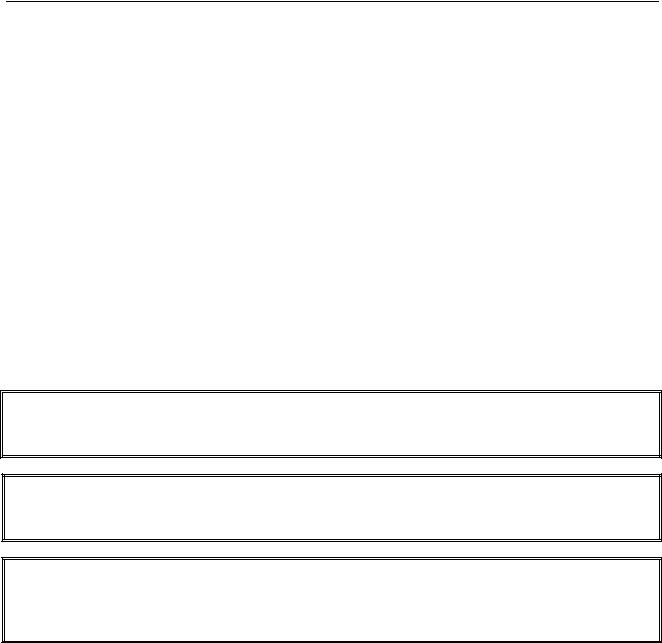
OCF30™ SERIES GAS FRYER
CHAPTER 1: GENERAL INFORMATION
1.1Applicability and Validity
The OCF30™ Series Gas Fryer, with SMART4U® technology, has been approved by the European Union for sale and installation in the following EU countries: AT, BE, DE, DK, ES, FI, FR, GB, IE, IT, LU, NL, NO, PT and SE.
This manual is applicable to and valid for all OCF30™ Series Gas Fryers sold in Englishspeaking countries, including those in the European Union. Where conflicts exist between instructions and information in this manual and local or national codes of the country in which the equipment is installed, installation and operation shall comply with those codes.
This appliance is only for professional use and shall be used by qualified personnel only, as defined in Section 1.7.
1.2Safety Information
Before attempting to operate your unit, read the instructions in this manual thoroughly. Throughout this manual, you will find notations enclosed in double-bordered boxes similar to the ones that follow.
 CAUTION
CAUTION
CAUTION boxes contain information about actions or conditions that may cause or result in a malfunction of your system.
 WARNING
WARNING
WARNING boxes contain information about actions or conditions that may cause or result in damage to your system, and which may cause your system to malfunction.
 DANGER
DANGER
DANGER boxes contain information about actions or conditions that may cause or result in injury to personnel, and which may cause damage to your system and/or cause your system to malfunction.
Your fryer is equipped with automatic safety features:
1.High temperature detection shuts off gas to the burner assembly should the controlling thermostat fail.
2.An optional safety switch built into the drain valve prevents burner ignition with the drain valve even partially open.
1-1
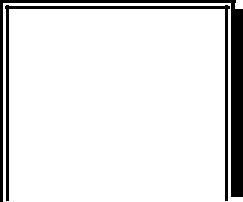
1.3Controller Information
FCC COMPLIANCE
This equipment has been tested and found to comply with the limits for a Class A digital device, pursuant to Part 15 of the FCC rules. While this device is a verified Class A device, it has been shown to meet the Class B limits. These limits are designed to provide reasonable protection against harmful interference when the equipment is operated in a commercial environment. This equipment generates, uses and can radiate radio frequency energy and, if not installed and used in accordance with the instruction manual, may cause harmful interference to radio communications.
Operation of the equipment in a residential area is likely to cause harmful interference in which case the user will be required to correct the interference at their own expense.
The user is cautioned that any changes or modifications not expressly approved by the party responsible for compliance could void the user's authority to operate the equipment.
If necessary, the user should consult the dealer or an experienced radio and television technician for additional suggestions.
The user may find the following booklet prepared by the Federal Communications Commission helpful: "How to Identify and Resolve Radio-TV Interference Problems". This booklet is available from the U.S. Government Printing Office, Washington, DC 20402, Stock No. 004-000-00345-4.
1.4European Community (CE) Specific Information
The European Community (CE) has established certain specific standards regarding equipment of this type. Whenever a conflict exists between CE and non-CE standards, the information or instructions concerned are identified by means of shadowed boxes similar to the one below.
Non-CE Standard
for Incoming Gas Pressures
|
|
Type |
Minimum |
Maximum |
|
|
|
|
|
|
6" W.C. |
14" W.C. |
|
|
|
|
|
Natural |
1.49 kPa |
3.49 kPa |
|
|
|
|
|
|
14.68 mbar |
34.72 mbar |
|
|
|
|
|
|
11" W.C. |
14" W.C. |
|
|
|
|
|
LP |
2.74 kPa |
3.49 kPa |
|
|
|
|
|
|
27.28 mbar |
34.84 mbar |
|
|
|
|
|
|
|
|
|
|
|
1-2
1.5Equipment Description
OCF30™ Series high-efficiency gas fryers employ a unique infrared burner system that uses up to 43% less energy to cook the same volume as conventional open-burner fryers. Models in this series include FPGL variants. These models have a built-in FootPrint Pro filtration system located under the leftmost fryer in a battery.
All OCF30™ Series Gas fryers are of an open-frypot design with no tubes and have a hand-sized opening into the cold zone, which makes cleaning the stainless frypot quick and easy.
Heating is supplied by a pair of infrared burner assemblies mounted on each side of the frypot. Combustion air for the burners is supplied by a dedicated blower mounted on the front of the frypot. OCF30™ Series Gas fryers can be configured for natural gas, propane (LP), or manufactured gas, as required by the customer.
Each frypot is equipped with a temperature probe for precise temperature control.
All OCF30™ Series Gas fryers come standard with electronic ignition and melt cycle mode. The OCF30™ Series Gas fryers are controlled with a 3000 or CM3.5 computer. Fryers in this series come in full or split pot arrangements, and can be purchased as two, three or four vat fryers.
All fryers in this series require an external source of AC electrical power. Units can be configured for voltages ranging from 100 VAC to 240 VAC.
OCF30™Series fryers are shipped completely assembled. All fryers are shipped with a package of standard accessories. Each fryer is adjusted, tested, and inspected at the factory before crating for shipment.
1.6Installation, Operating, and Service Personnel
Operating information for Frymaster equipment has been prepared for use by qualified and/or authorized personnel only, as defined in Section 1.7. All installation and service on Frymaster equipment must be performed by qualified, certified, licensed, and/or authorized installation or service personnel, as defined in Section 1.7.
1.7Definitions
QUALIFIED AND/OR AUTHORIZED OPERATING PERSONNEL
Qualified/authorized operating personnel are those who have carefully read the information in this manual and have familiarized themselves with the equipment functions, or who have had previous experience with the operation of the equipment covered in this manual.
1-3

QUALIFIED INSTALLATION PERSONNEL
Qualified installation personnel are individuals, firms, corporations, and/or companies which, either in person or through a representative, are engaged in and are responsible for the installation of gasfired appliances. Qualified personnel must be experienced in such work, be familiar with all gas precautions involved, and have complied with all requirements of applicable national and local codes.
QUALIFIED SERVICE PERSONNEL
Qualified service personnel are those who are familiar with Frymaster equipment and who have been authorized by Frymaster, L.L.C. to perform service on the equipment. All authorized service personnel are required to be equipped with a complete set of service and parts manuals, and to stock a minimum amount of parts for Frymaster equipment. A list of Frymaster Factory Authorized Servicers (FAS’s) is located on the Frymaster website at www.frymaster.com/service. Failure to use
qualified service personnel will void the Frymaster warranty on your equipment.
1.8Shipping Damage Claim Procedure
Your Frymaster equipment was carefully inspected and packed before leaving the factory. The transportation company assumes full responsibility for safe delivery upon its acceptance of the equipment for transport.
What to do if your equipment arrives damaged:
1.File a claim for damages immediately, regardless of the extent of damages.
2.Inspect for and record all visible loss or damage, and ensure that this information is noted on the freight bill or express receipt and is signed by the person making the delivery.
3.Concealed loss or damage that was unnoticed until the equipment was unpacked should be recorded and reported to the freight company or carrier immediately upon discovery. A concealed damage claim must be submitted within 15 days of the date of delivery. Ensure that the shipping container is retained for inspection.
Frymaster DOES NOT ASSUME RESPONSIBILITY FOR DAMAGE OR LOSS
INCURRED IN TRANSIT.
1.9Parts Ordering and Service Information
In order to assist you quickly, the Frymaster Factory Authorized Servicer (FAS) or Service Department representative requires certain information about your equipment. Most of this information is printed on a data plate affixed to the inside of the fryer door. Part numbers are found in the Service and Parts Manual. Parts orders may be placed directly with your local FAS or distributor. A list of Frymaster Factory Authorized Servicers (FAS’s) is located on the Frymaster website at www.frymaster.com/service. If you do not have access to this list, contact the Frymaster Service Department at 1-800-551-8633 or 1-318-865-1711 or by e-mail: service@frymaster.com.
1-4
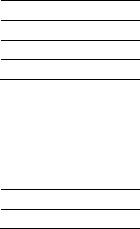
When ordering parts, the following information is required:
Model Number:
Serial Number:
Type of Gas or Voltage:
Item Part Number:
Quantity Needed:
Service information may be obtained by contacting your local FAS/Distributor. Service may also be obtained by calling the Frymaster Service Department at 1-800-551-8633 or 1-318-865-1711 or by e-mail: service@frymaster.com. When requesting service, please have the following information ready:
Model Number:
Serial Number:
Type of Gas:
In addition to the model number, serial number, and type of gas, please be prepared to describe the nature of the problem and have ready any other information that you think may be helpful in solving your problem.
RETAIN AND STORE THIS MANUAL IN A SAFE PLACE FOR FUTURE USE.
1-5
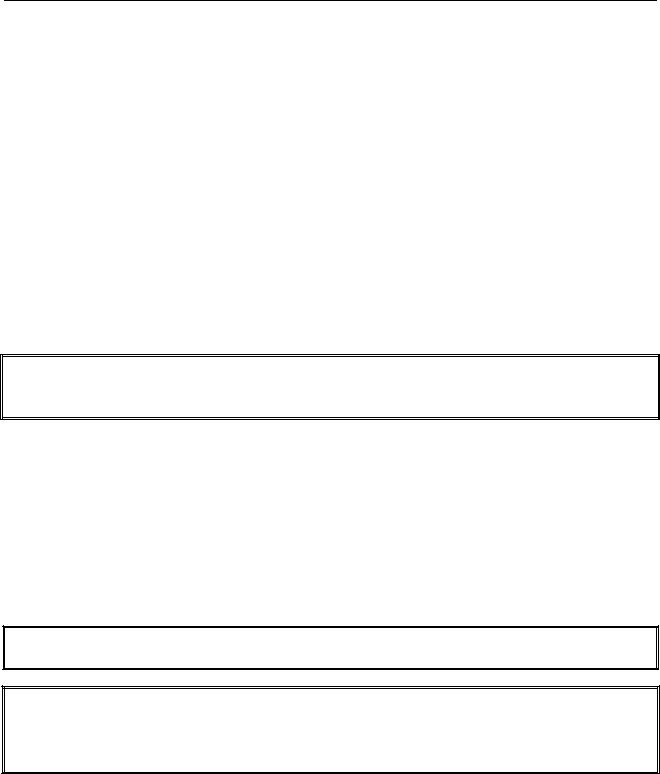
OCF30™ SERIES GAS FRYER
CHAPTER 2: INSTALLATION INSTRUCTIONS
2.1General Installation Requirements
Qualified, licensed, and/or authorized installation or service personnel, as defined in Section 1.7 of this manual, should perform all installation and service on Frymaster equipment.
Conversion of this appliance from one type of gas to another should only be performed by qualified, licensed, and/or authorized installation or service personnel as defined in Section 1.7 of this manual.
Failure to use qualified, licensed, and/or authorized installation or service personnel (as defined in Section 1.7 of this manual) to install, convert to another gas type or otherwise service this equipment will void the Frymaster warranty and may result in damage to the equipment or injury to personnel.
Where conflicts exist between instructions and information in this manual and local or national codes or regulations, installation and operation shall comply with the codes or regulations in force in the country in which the equipment is installed.
 DANGER
DANGER
Building codes prohibit a fryer with its open tank of hot oil being installed beside an open flame of any type, including those of broilers and ranges.
Upon arrival, inspect the fryer carefully for visible or concealed damage. (See Shipping Damage Claim Procedure in Chapter 1.)
2.1.1 Clearance and Ventilation
The fryer(s) must be installed with a 6” (150 mm) clearance at both sides and back when installed adjacent to combustible construction; no clearance is required when installed adjacent to noncombustible construction. A minimum of 24” (600 mm) clearance should be provided at the front of the fryer.
 WARNING
WARNING
Do not block the area around the base or under the fryers.
 DANGER
DANGER
No structural material on the fryer should be altered or removed to accommodate placement of the fryer under a hood. Questions? Call the Frymaster Dean Service Hotline at 1-800-551-8633.
2-1

One of the most important considerations of efficient fryer operation is ventilation. Make sure the fryer is installed so that products of combustion are removed efficiently, and that the kitchen ventilation system does not produce drafts that interfere with burner operation.
The fryer flue opening must not be placed close to the intake of the exhaust fan, and the fryer must never have its flue extended in a “chimney” fashion. An extended flue will change the combustion characteristics of the fryer, causing longer recovery time. It also frequently causes delayed ignition. To provide the airflow necessary for good combustion and burner operation, the areas surrounding the fryer front, sides, and rear must be kept clear and unobstructed.
 DANGER
DANGER
This appliance must be installed with sufficient ventilation to prevent the occurrence of unacceptable concentrations of substances harmful to the health of personnel in the room in which it is installed.
Fryers must be installed in an area with an adequate air supply and adequate ventilation. Adequate distances must be maintained from the flue outlet of the fryer to the lower edge of the ventilation filter bank. Filters should be installed at an angle of 45º. Place a drip tray beneath the lowest edge of the filter. For U.S. installation, NFPA standard No. 96 states, “A minimum distance of 18 in. (450 mm) should be maintained between the flue outlet and the lower edge of the grease filter.”
Frymaster recommends that the minimum distance be 24 in. (600 mm) from the flue outlet to the bottom edge of the filter when the appliance consumes more than 120,000 BTU per hour.
For installations in the United States, information on construction and installation of ventilating hoods can be found in the NFPA standard cited above. A copy of the standard may be obtained from the National Fire Protection Association, Battery March Park, Quincy, MA 02269.
2.1.2 National Code Requirements
The type of gas for which the fryer is equipped is stamped on the data plate attached to the inside of the fryer door. Connect a fryer stamped “NAT” only to natural gas, those stamped “PRO” only to propane gas, and those stamped “MFG” only to manufactured gas.
Installation shall be made with a gas connector that complies with national and local codes, and, where applicable, CE codes. Quick-disconnect devices, if used, shall likewise comply with national, local, and, if applicable, CE codes. In the absence of local codes, installation must conform to the national Fuel Gas Code, ANSI Z223.1/NFPA 54 or the Natural Gas and Propane Installation code, CSA B149.1, as applicable including:
1.The appliance and its individual shutoff valve must be disconnected form the gas supply piping system during any pressure testing of the system at test pressures in excess of ½ psi (3.5 kPa).
2.The appliance must be isolated from the gas supply piping system by closing its individual manual shutoff valve during any pressure testing of the gas supply piping system at test pressures equal to or less than ½ psi (3.5 kPa).
2-2

2.1.3 Electrical Grounding Requirements
All electrically operated appliances must be grounded in accordance with all applicable national and local codes, and, where applicable, CE codes. In the absence of local codes, the appliance must be grounded in accordance with National Electrical Code, ANSI/NFPA 70, or the Canadian Electrical Code, CSA C22.2, as applicable. All units (cord connected or permanently connected) should be connected to a grounded power supply system. A wiring diagram is located on the inside of the fryer door. Refer to the rating plate on the inside of the fryer door for proper voltages.
 DANGER
DANGER
This appliance is equipped with a special (grounding) plug for your protection against electrical shock, and must be plugged directly into a properly grounded receptacle. Do not cut, remove, or otherwise bypass the grounding prong on this plug!
 DANGER
DANGER
This appliance requires electrical power for operation. Place the gas control valve in the OFF position in case of a prolonged power outage. Do not attempt to operate this appliance during a power outage.
2.1.4 Australian Requirements
To be installed in accordance with AS 5601, local authority, gas, electricity, and any other relevant statutory regulations.
If casters are fitted, the installation must comply with AS5601 and AS1869 requirements.
2.2Caster/Leg Installation
Depending upon the specific configuration ordered, your fryer may have been shipped without installed casters or legs. DO NOT INSTALL THIS APPLIANCE WITHOUT CASTERS OR
LEGS. If the appliance requires the installation of casters or legs, install them in accordance with the instructions included in your accessory package.
On an appliance with casters; the installation shall be made with a connector that complies with the Standard for Moveable Gas Appliances, ANSI Z21.69 • CSA 6.16, and a quick disconnect device that complies with the Standard for Quick-Disconnect Devices for Use With Gas Fuel, ANSI Z21.41
• CSA 6.9.
2.3Pre-Connection Preparations
 DANGER
DANGER
DO NOT connect this appliance to the gas supply before completing each step in this section.
After the fryer has been positioned under the exhaust hood, ensure the following has been accomplished:
2-3
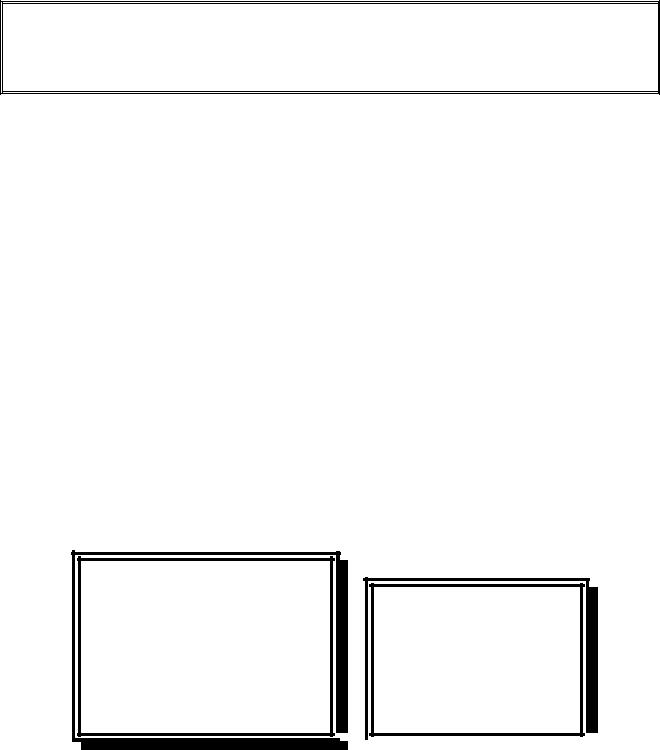
1.Adequate means must be provided to limit the movement of fryers without depending upon the gas line connections. If a flexible gas hose is used, a restraining cable must be connected at all times when the fryer is in use. The restraining cable and installation instructions are packed with the flexible hose in the accessories box that was shipped with your unit.
 DANGER
DANGER
Do not attach an apron drainboard to a single fryer. The fryer may become unstable, tip over, and cause injury. The appliance area must be kept free and clear of combustible material at all times.
2.Level fryers equipped with legs by screwing out the legs approximately 1 inch then adjusting them so that the fryer is level and at the proper height in the exhaust hood. Frymaster recommends that the minimum distance from the flue outlet to the bottom edge of the hood be 24 in. (600 mm) when the appliance consumes more than 120,000 BTU per hour. NOTE: There are no built-in leveling devices on fryers equipped with casters. The floor where the fryer is to be installed must be level.
3.Test the fryer electrical system:
a.Plug the fryer electrical cord(s) into a grounded electrical receptacle.
b.Place the computer switch in the ON position. Verify that the display indicates MLTCYCL.
c.Place the computer power switch in the OFF position. Verify that the display indicates
OFF.
4.Refer to the data plate on the inside of the fryer door to determine if the fryer burner is configured for the proper type of gas before connecting the fryer quick-disconnect device or piping from the gas supply line.
5.Verify the minimum and maximum gas supply pressures for the type of gas to be used in accordance with the accompanying tables.
CE Standard
for Incoming Gas Pressures
for Fryers Manufactured After April 1999
|
Pressure |
Orifice Diameter |
Regulator Pressure |
|
||
|
Single |
Dual |
Single |
Dual |
||
Gas |
(mbar)(1) |
Vat |
Vat |
Vat |
Vat |
|
G20 |
20 |
2 x 3.18 |
2 x 3.18 |
7 mbar |
8 mbar |
|
G25 |
20 or 25 |
2 x 3.18 |
2 x 3.18 |
10 mbar |
11.2 mbar |
|
G30 |
28/30 or 50 |
2 x 1.95 |
2 x 1.95 |
17 mbar |
17 mbar |
|
G31 |
37 or 50 |
2 x 1.95 |
2 x 1.95 |
20.6 mbar |
20.6 mbar |
|
(1) mbar = 10,2 mm H2O
Non-CE Standard
for Incoming Gas Pressures
|
|
|
|
Gas |
Minimum |
Maximum |
|
|
|
|
|
|
|
6" W.C. |
14" W.C. |
|
|
|
|
|
|
Natural |
1.49 kPa |
3.48 kPa |
|
|
|
|
|
|
|
14.93 mbar |
34.84 mbar |
|
|
|
|
|
|
|
11" W.C. |
14" W.C. |
|
|
|
|
|
|
LP |
2.74 kPa |
3.48 kPa |
|
|
|
|
|
|
|
27.37 mbar |
34.84 mbar |
|
|
|
|
|
|
|
|
|
|
|
|
|
|
|
|
|
|
|
|
6.For fryers equipped with a FootPrint Pro system or basket lifts, plug the electrical cord(s) into a power receptacle behind the fryer.
2-4
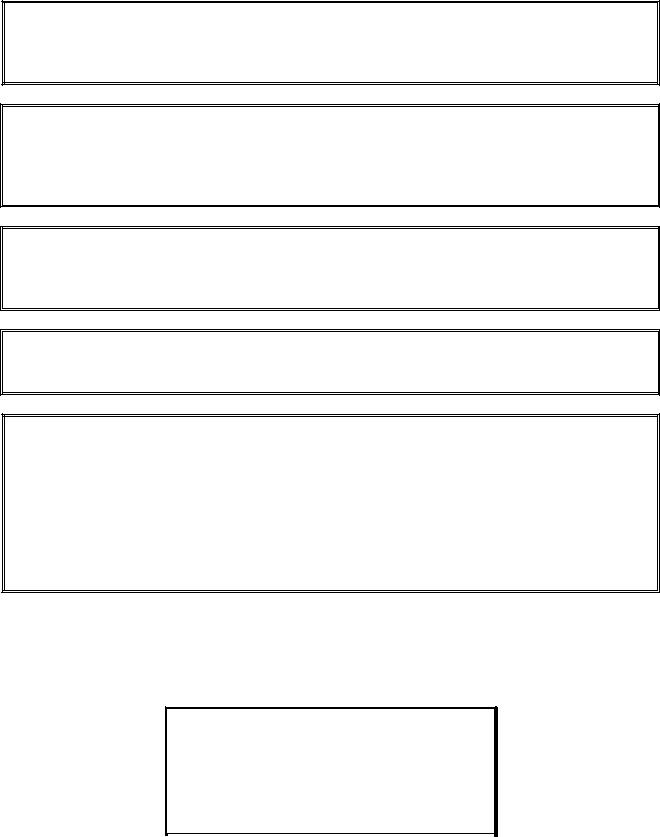
2.4Connection to Gas Line
 DANGER
DANGER
Before connecting new pipe to this appliance, the pipe must be blown out thoroughly to remove all foreign material. Foreign material in the burner and gas controls will cause improper and dangerous operation.
 DANGER
DANGER
The appliance and its individual shutoff valve must be disconnected from the gas supply piping system during any pressure testing of the system at test pressures in excess of ½ PSI (3.45 kPa, 13.84 inches W.C.) to avoid damage to the fryer’s gas tubes and gas valve(s).
 DANGER
DANGER
The appliance must be isolated from the gas supply piping system by closing its individual manual shutoff valve during any pressure testing of the gas supply piping system at test pressures equal to or less than ½ PSI (3.45 kPa, 13.84 inches W.C.)
 DANGER
DANGER
“Dry-firing” your unit will cause damage to the frypot and can cause a fire. Always ensure that cooking oil or water is in the frypot before firing the unit.
 DANGER
DANGER
All connections must be sealed with a joint compound suitable for the gas being used and all connections must be tested with a solution of soapy water before lighting any pilots.
Never use matches, candles, or any other ignition source to check for leaks. If gas odors are detected, shut off the gas supply to the appliance at the main shut-off valve and immediately contact the local gas company or an authorized service agency for service.
The size of the gas line used for installation is very important. If the line is too small, the gas pressure at the burner manifold will be low. This may cause slow recovery and delayed ignition. The incoming gas supply line should be a minimum of 1½” (38 mm) in diameter. Refer to the chart below for the minimum sizes of connection piping.
Gas Connection Pipe Sizes
(Minimum incoming pipe size should be 1 1/2" (41 mm))
|
|
|
|
4 or more |
Gas |
Single Unit |
2 - 3 Units |
|
units* |
Natural |
3/4" (22 mm) |
1" (28 mm) |
1 |
1/4" (36 mm) |
Propane |
1/2" (15 mm) |
3/4" (22 mm) |
|
1" (28 mm) |
Manufactured |
1" (28 mm) |
1 1/4" (36 mm) |
1 |
1/2" (41 mm) |
|
|
|
|
|
2-5

* For distances of more than 20 feet (6 m) and/or more than 4 fittings or elbows, increase the connection by one pipe size.
The OCF30™ Series gas fryer has received the CE mark for the countries and gas categories indicated in the table below. NOTE: The nominal heat input (QN) is 21kW except for AT, DE, LU and category 3P/B, which is 23kW.
NOTICEAustralia Only
The air pressure switch on the combustion blower should read: Full Vat units-122pa (0.5 inches W.C.) and for Split Vat units-180pa (0.72 inches W.C.).
CE Approved Gas Categories by Country
|
COUNTRIES |
CATEGORIES |
GAS |
PRESSURE (MBAR) |
|
|
|
|
AUSTRIA (AT) |
II2H3B/P |
G20 |
20 |
|
|
|
|
G30, G31 |
50 |
|
|
|
||
|
|
|
|
|
|
||
|
BELGIUM (BE) |
I2E(R)B |
G20, G25 |
20, 25 |
|
|
|
|
I3+ |
G30, G31 |
28-30, 37 |
|
|
|
|
|
|
|
|
|
|||
|
DENMARK (DK) |
II2H3B/P |
G20 |
20 |
|
|
|
|
G30, G31 |
30 |
|
|
|
||
|
|
|
|
|
|
||
|
|
II2Esi3+ |
G20, G25 |
20, 25 |
|
|
|
|
FRANCE (FR) |
G30, G31 |
28-30, 37 |
|
|
|
|
|
|
|
|
|
|||
|
II2Esi3P |
G20, G25 |
20, 25 |
|
|
|
|
|
|
|
|
|
|||
|
|
G31 |
50 |
|
|
|
|
|
|
|
|
|
|
||
|
FINLAND (FI) |
II2H3B/P |
G20 |
20 |
|
|
|
|
G30, G31 |
30 |
|
|
|
||
|
|
|
|
|
|
||
|
|
II2ELL3B/P |
G20, G25 |
20 |
|
|
|
|
GERMANY (DE) |
G30, G31 |
50 |
|
|
|
|
|
|
|
|
|
|||
|
|
I3P |
G31 |
50 |
|
|
|
|
GREECE (GR) |
II2H3+ |
G20 |
20 |
|
|
|
|
G30, G31 |
28-30, 37 |
|
|
|
||
|
|
|
|
|
|
||
|
ITALY (IT) |
II2H3+ |
G20 |
20 |
|
|
|
|
G30, G31 |
28-30, 37 |
|
|
|
||
|
|
|
|
|
|
||
|
IRELAND (IE) |
II2H3+ |
G20 |
20 |
|
|
|
|
G30, G31 |
28-30, 37 |
|
|
|
||
|
|
|
|
|
|
||
|
LUXEMBOURG (LU) |
II2E3B/P |
G20 |
20 |
|
|
|
|
G30, G31 |
50 |
|
|
|
||
|
|
|
|
|
|
||
|
|
II2L3P |
G25 |
25 |
|
|
|
|
NETHERLANDS (NL) |
G31 |
50 |
|
|
|
|
|
|
|
|
|
|||
|
II2L3B/P |
G25 |
25 |
|
|
|
|
|
|
|
|
|
|||
|
|
G30, G31 |
30 |
|
|
|
|
|
|
|
|
|
|
||
|
NORWAY (NO) |
I3B/P |
G30, G31 |
30 |
|
|
|
|
PORTUGAL (PT) |
II2H3+ |
G20 |
20 |
|
|
|
|
G30, G31 |
28-30, 37 |
|
|
|
||
|
|
|
|
|
|
||
|
|
II2H3+ |
G20 |
20 |
|
|
|
|
SPAIN (ES) |
G30, G31 |
28-30, 37 |
|
|
|
|
|
|
|
|
|
|||
|
II2H3P |
G20 |
20 |
|
|
|
|
|
|
|
|
|
|||
|
|
G31 |
37, 50 |
|
|
|
|
|
|
|
|
|
|
||
|
SWEDEN (SE) |
II2H3B/P |
G20 |
20 |
|
|
|
|
G30, G31 |
30 |
|
|
|
||
|
|
|
|
|
|
||
|
UNITED KINGDOM (UK) |
II2H3+ |
G20 |
20 |
|
|
|
|
G30, G31 |
28-30, 37 |
|
|
|
||
|
|
|
|
|
|
||
|
|
|
|
|
|
|
|
|
|
|
|
|
|
|
|
|
|
|
|
|
|
|
|
|
|
|
|
|
|
|
|
|
|
|
|
|
|
|
|
CE Standard
Required airflow for the combustion air supply is 2m3/h per kW.
1.Connect the quick-disconnect hose to the fryer quick-disconnect under the fryer and to the building gas line.
2-6
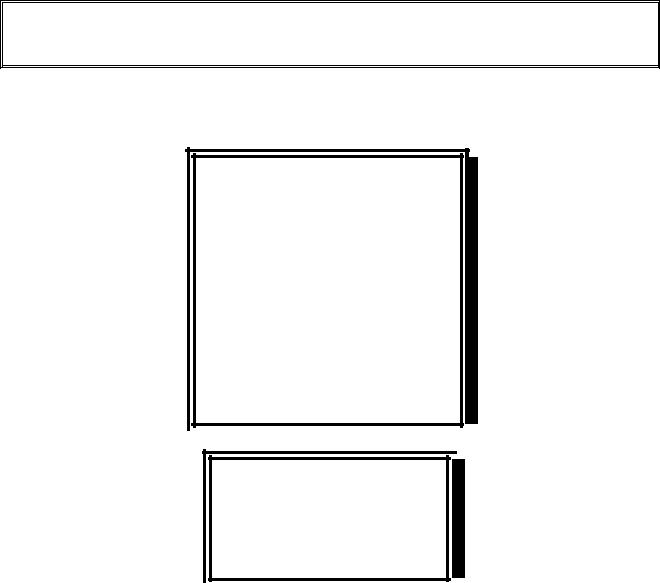
NOTE: Some fryers are configured for a rigid connection to the gas supply line. These units are connected to the gas supply line at the rear of the unit.
When using thread compound, use very small amounts on male threads only. Use a pipe thread compound that is not affected by the chemical action of LP gases (Loctite™ PST56765 Sealant is one such compound). DO NOT apply compound to the first two threads. Doing so may allow some of the compound to enter the gas stream, resulting in clogging of burner orifices and/or the control valve.
2.Open the gas supply to the fryer and check all piping, fittings, and gas connections for leaks. A soap solution should be used for this purpose.
3.Close the fryer drain valve and fill the frypot with water or oil to the bottom OIL LEVEL line at the rear of the frypot. Light the fryer described in the “Lighting Instructions” topics found in Chapter 3 of this manual.
 DANGER
DANGER
“Dry-firing” your unit will cause damage to the frypot and can cause a fire. Always ensure that cooking oil or water is in the frypot before firing your unit.
4.The burner manifold pressure should be checked at this time by the local gas company or an authorized service agent. The tables below and on the following page list the burner manifold gas pressures for the various gas types that can be used with this equipment.
CE Standard
Burner Manifold Gas Pressures
for Fryers Manufactured After April 1999
|
|
|
|
Pressure (mbar) |
|
|
||
|
|
|
|
|
|
|
|
|
|
|
|
|
Single |
Dual |
|
|
|
|
|
Gas |
|
Vat |
Vat |
|
|
|
|
|
Natural Gas Lacq |
|
7 |
8 |
|
|
|
|
|
(G20) under 20 mbar |
|
|
|
|
||
|
|
|
|
|
|
|
|
|
|
|
Natural Gas Gronique |
* |
10 |
11.2 |
|
|
|
|
|
(G25) under 25 mbar |
|
|
|
|
||
|
|
|
|
|
|
|
|
|
|
|
Natural Gas Gronique |
|
10 |
11.2 |
|
|
|
|
|
(G25) under 20 mbar |
|
|
|
|
||
|
|
|
|
|
|
|
|
|
|
|
Butane/Propane |
|
17 |
17 |
|
|
|
|
|
(G30) at 28/30 or 50 mbar |
|
|
|
|||
|
|
|
|
|
|
|
||
|
|
Propane |
|
20.6 |
20.6 |
|
|
|
|
|
(G31) under 37 or 50 mbar |
|
|
|
|||
|
|
|
|
|
|
|
||
|
|
|
|
|
|
|
|
|
|
|
|
|
|
|
|
|
|
|
|
|
|
|
|
|
|
|
|
|
|
|
|
|
|
|
|
|
|
|
|
|
|
|
|
|
Non-CE Standard
Burner Manifold Gas Pressures
|
Gas |
Pressure |
|
|
|
|
Natural |
3" W.C. |
|
|
|
|
0.73 kPa |
|
|
|
|
|
|
|
|
|
|
|
Propane |
8.25" W.C. |
|
|
|
|
2.5 kPa |
|
|
|
|
|
|
|
|
|
|
|
|
|
|
|
|
|
|
|
|
|
|
2-7
